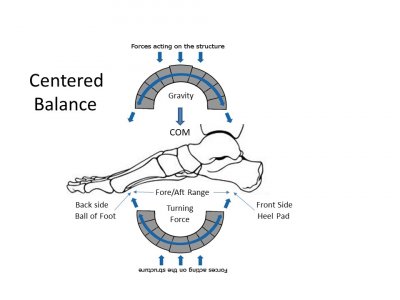But, the instructor needs to be able to see that there is an issue with the alignment first. Years ago I was working with an examiner at a local resort who was helping a group of instructors get their Level II. One of the students hit an impass and could not for the life of her complete a drill. As we were watching the video, as a bootfitter I could see she was out of alignment, the examiner didn't seee it. I used what I had around to get her (roughly) to where she needed to be and she was then able to do the drill. Her tears of frustration turned into tears of joy.
One of the reasons I liked bootfitting on the mountain for the above reason. When I was at Northstar, there were a few intrstructors that understood alignment and it's imprtance in the students progression. It was not uncommon for one of them to either bring or send a student in for me to check them out for alignment. I could usually see if there was an issue by doing an assessment. In most cases it was the boot.
I don't profess to being an instructor, I am not good at teaching, but I am pretty good at observing. When I have someone on the boot bench, just haviing the flex into a boot I can usually see if we might have alignment issues. If I see a stance that is askew, "I would say, I bet you are having trouble with turning left?" then I would usually get a reply "How did you know?", thats when we usually start the alignment conversation.
I have been asking MasterFit for years to offer a module for instructors, not so much for them to become bootfitters but to help them see if there are boot issues that are impeding the students progression. I think even a basic understanding of alignment assessment should be required for getting the Level III. How to think that this is not a significant key to the progression process is mind blowing.
AMEN. This has been my goal for years. So many either play ostrich or they profess to know it all.
Currently, I am working on an on-snow/classroom night course to be offered to level II and above instructors and coaches Next season. This will be one night per week, 5 or 6 session program covering, recognizing signs of misalignment and differentiating it from technique, psychological,and physical issues. We will ski through nine identically prepared skis in 3 pods. One pod will be CANTED +2, -2 and neutral. The next pod will be + 4mm, -4mm and neutral BINDING DELTA. The third pod will be BINDING PLACEMENT, forward mounted on one pair, aft positioned on one pair and neutral on the other. Attendees will rotate through each pod while observing each other to see the effects and compensations required to ski and balance. they will experience the sensations themselves and notice how they must adapt their skiing stances to compensate. after we ski through all the skis we go inside and debrief, drawing conclusions and understanding. This is just the first session!
I have offered this clinic in the past at PSIA events to rave reviews so I know the impact of skiers seeing and skiing through these parameters is an awakening!
The subsequent sessions will work through the five skiing fundamentals relating them to the equipment parameters which affect each fundamental. By completion of this course attendees will have an enlightened understanding of this relationship between equipment angles and performance. They will understand the 10 parameters that need to be assessed and optimized for best uncompromized performance. Now, like Phil eluded to, they will be better able to watch a skier and identify the accurate cause of what the skier is displaying, rather than putting it all in the technique bucket.
I too have suggested to Masterfit instructors an instructor/coach focused course! Would love to see it and even contribute.
